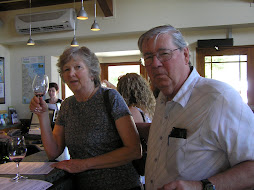




Well, of course, you cannot come to New England and not see some covered bridges – they are one of the unique features of the area. There are at least two different internal structure types and several different external views.
After seeing several of them I began wondering what was the point . . . why make a "covered" bridge?
And I began asking locals who should apparently know, why the "covers" were put on the bridges. I got several different puzzled responses –- perhaps they wanted to delay or prevent the formation of ice on the bridges in winter, perhaps the "covered" structure added to the overall strength of the bridge, perhaps the "cover" made the floor last longer by protecting it from the elements, perhaps the load of snow on an open bridge made more of a load than the bridge could support, perhaps horses were skittish about crossing an open bridge or trestle, perhaps the young men of the day simply wanted a secluded place to pursue their heart's desires – no one seemed to know for sure.
In fact, a brochure entitled "Covered Bridges of the White Mountains" put out by White Mountain Attractions of Woodstock, NH listing all 26 covered bridges in the White Mountains by name and location begins by saying "Why the first covered bridges were built has been obscured by time. Some say . . . Others point to . . . "
What is known is that many, many covered bridges were built in the U.S. in the 19th century and before – one source say as many as 10,000. What is also known is that covered bridges were "invented" elsewhere – here's one source on this topic:
"Covered bridges were not invented in New England, but had been used on a limited basis in Central Europe for several hundred years. The ingenuity of five New Englanders, however, launched a whole new era in bridge construction. In the late 1700's, America was growing. Rivers were a major obstacle to communication and land transportation. Bridges were needed for commerce, but deep water and spring floods made low, piling-supported bridges impractical. About this time, Timothy Palmer of Newburyport and Theodore Burr of Torringford, Conn. adapted European designs and became the first successful builders of large wooden truss bridges in America. Both these men were self-taught craftsmen who built many covered bridges all over the northeast. Old growth forests provided an abundant supply of large timbers."
Probably the best single reason for making a covered bridge was durability of the bridge – two of the photographs here are of bridges more than a hundred years old, and it is said that untreated timbers would last for no more than ten years in an uncovered bridge.
Interesting . . .

No comments:
Post a Comment